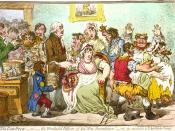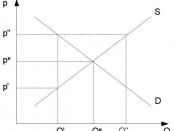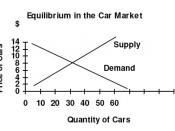Changes in Supply, Demand, and Price
Introduction
Prior to 2004, vaccinations to prevent the most common human diseases were readily available. In the 1950s, there were 26 pharmaceutical companies that made vaccines in the United States; however, by 2004 only four such companies remained. For instance, while the demand for the flu vaccine has risen sharply, the supply of the vaccine has declined; consequently, the price of the vaccine has increased. The problem has now reached widespread proportions. "Over the past three decades the vaccine infrastructure in the United States has steadily crumbled" (Serafini, 2006).
Supply
Since the 1950s, the supply of flu and childhood disease vaccines has continued to decrease due to financial reasons. Vaccine production has not traditionally been a lucrative business, and everything comes down to money (Serafini, 2006). It is not profitable enough for pharmaceutical companies to build expensive plants to supply the one or two doses needed for most vaccines when companies can make more money manufacturing a drug that people will take daily for chronic conditions.
Along with the decrease in the production of vaccinations by pharmaceutical companies, another major concern that is adding to the problem is lawsuits. "The vaccine industry today is worth $6.7 billion, approximately, and lawsuits out there are adding up. Damages being sought exceed $30 billion, total" (Serafini, 2006). The federal regulations for the manufacture of vaccinations were getting tougher, making it even more expensive for vaccine makers to stay in business. So, as cost continued to increase for producers of vaccines, these companies decreased their supply and, in turn, raised their prices. Yet, the demand for vaccines continues to increase year after year.
Demand
Vaccines are needed in greater quantities than the pharmaceutical companies are manufacturing today. "Between 1998 and 2004, nine of the 12 vaccines routinely...


